Connecting with our Communities
How to lend a hand while staying home
Are you feeling overwhelmed during this time of uncertainty? Are you wondering how you can give back while remaining socially distant? Here are five ways you can help from home during COVID-19:
- Donate blood – The American Red Cross and other agencies are in critical need of healthy blood donors. Visit their website to learn more about donating blood safely during COVID-19 and to make an appointment near you.
- Give to a local food bank – Find your local food bank on Feeding America’s website to learn how you can give back. Although some food banks are limiting in-person volunteers to keep others safe, most are accepting online donations.
- Support small businesses – Many local restaurants and businesses are being affected by stay at home policies around the world. Take time to purchase gift cards, shop online, leave positive reviews, and engage with their social media channels. Find your favorite business on Help Main Street to show your support.
- Volunteer – In today’s digitally connected society, there are many non-profits and organizations seeking help without having to be in-person. Alone connects the elderly with volunteers across the country through technology. You can sign up to be a telephone volunteer to check on older adults during COVID-19.
- Stay home – The easiest way to help is to follow your state’s orders to practice social distancing. Only leave the house for essential work or grocery runs and be extremely cautious if you must go out. Learn more helpful tips about staying home here.
Leading by example: What we’re doing to support our communities
NELSON Worldwide teammates from across the country are doing their part to make a difference. From donating blood, to sewing protective masks, we are making a positive impact in our communities and encourage everyone to do the same.
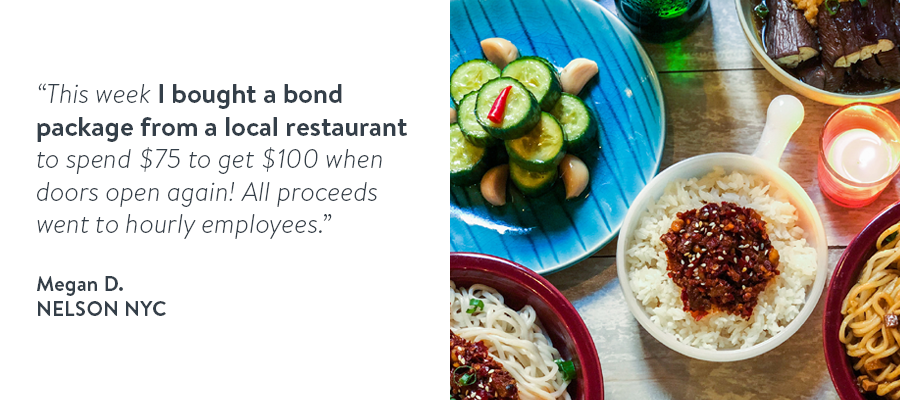
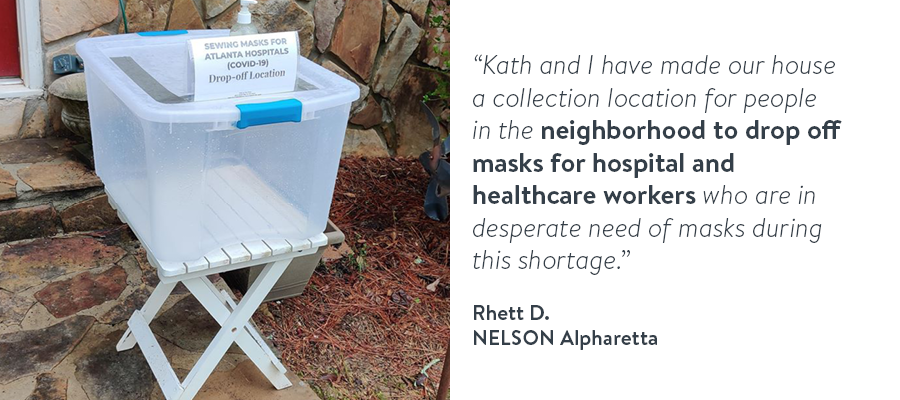
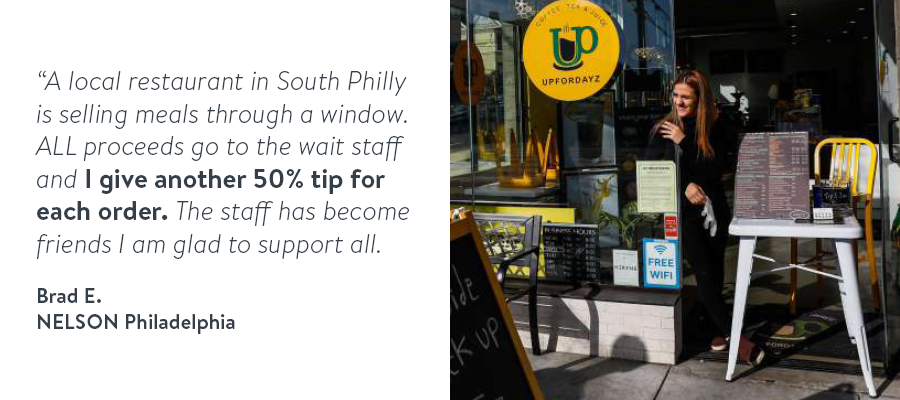
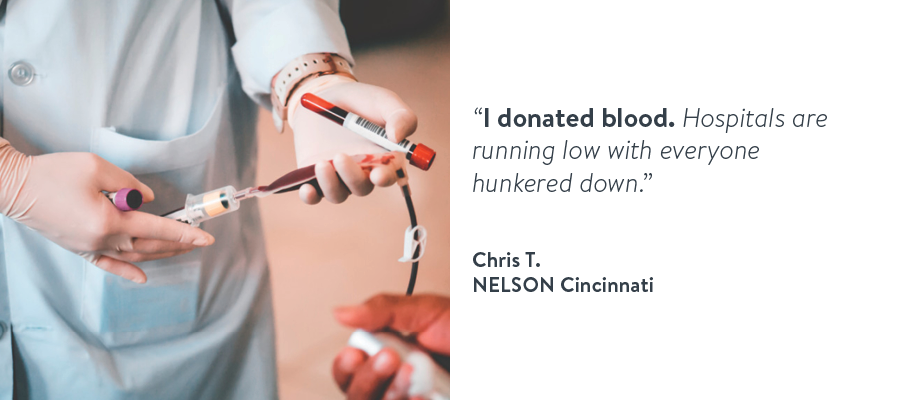
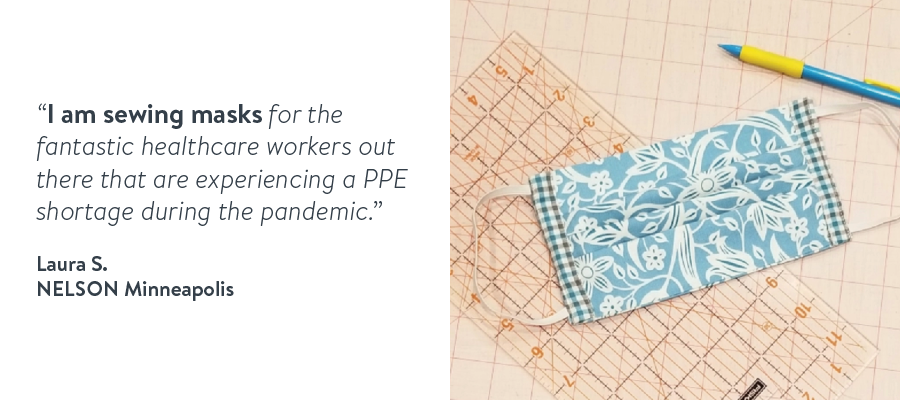
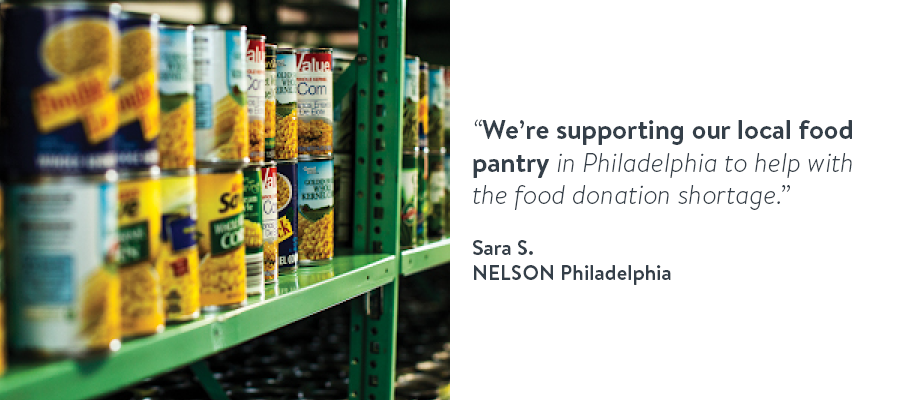
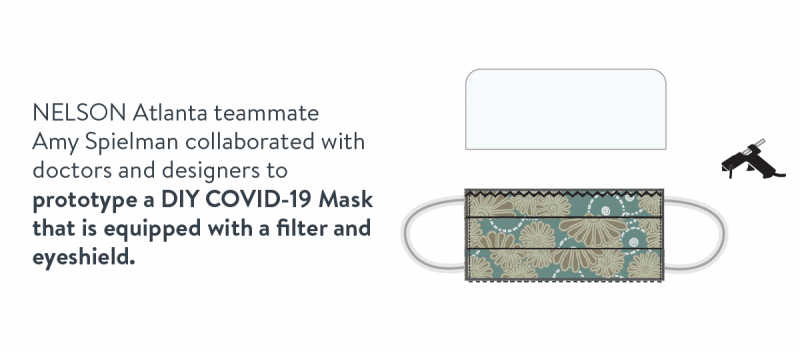
Healthcare Facilities: Sensible Solutions to Real Emergency Situations
How should we design for healing in response to emergency situations? The COVID-19 pandemic continues to put healthcare systems around the world to the ultimate test. From staffing to equipment to facilities, hospitals have bravely and expertly maximized their resources – managing surge capacities, delivering acute and critical care, and doing more with less in a remarkably short period of time. As every day yields new lessons learned, the pandemic challenges us to identify and respond to potential vulnerabilities going forward.
Trilith Live
Trilith Named Best in Atlanta Real Estate by Atlanta Business Chronicle
The Atlanta Business Chronicle has named Trilith the Real Estate Deal of the Year.
NELSON not only served as the architect of record for Trilith LIVE, we provided comprehensive architecture and interior design services for Trilith Guesthouse, a boutique hotel part of Marriott International’s Tribute Portfolio. Trilith Guesthouse opened in January with 191 hotel rooms carrying the theme of its creative surroundings. Oliver’s Twist Bar & View, giving a nod toward the classic Charles Dickens novel, is on the rooftop.
The Return of Hospitality: How To Retake Property Shots
While the hospitality industry resets, now is the time perfect time to show your hotel property some TLC and ensure it’s in the best shape it can be when guests return. From sanitizing to rearranging or simply taking new photos of your space, there are endless things you and your team can do so that when COVID-19 passes you’ll be booking rooms more than ever.
This week, we’re giving you all the tips and tricks on prepping, composing and capturing the best shots of your property. According to Trivago, hotels on booking websites with high-quality photos have a 63% higher click-through rate—but we know getting the perfect shot can be tricky when rooms and amenity spaces are full with guests. So, while your space is empty take advantage of the opportunity to make sure your space looks great online.
Prep The Shots
- Make a list of the shots you want to get
- Think about the time of day you will shoot
- Avoid shooting when the sun will be hitting the windows/area directly
- Clean and straighten the shot areas
- Wipe all surfaces down, sweep all the floors
- Look for glares on glass in picture frames or mirrors—close blinds or curtains to eliminate.
- Fluff up pillows and straighten and iron duvets/sheets
- Remove any extra or unsightly items (like trash cans or unapproved signage)
- BEFORE
- AFTER
- AFTER
- BEFORE
Compose Your Shots
- Turn on all the lights you can, even in adjacent areas for light spill over
- Position yourself in back corner so you can to get the widest view of the room. Shooting diagonally across the room will give a better result than shooting parallel or perpendicular to the walls.
- Take a test shot to see how everything looks and then adjust
- Adjust furniture to fill the frame of the picture, cutting down on bare areas
- Consider pulling furniture out from the edges of a room to fill the bare spots
- Or aligning/spacing furniture differently than you would when guests are around – there are no need for walkways in photos!
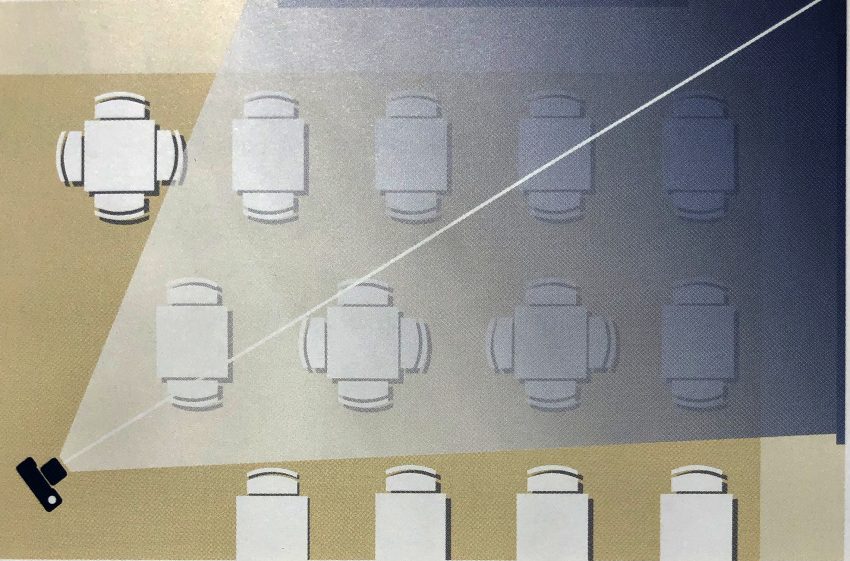
Take Your Shots
- If you have a tripod, use it! If not, try to find a table or something stable to set your camera on
- Utilize the self-timer mode—this as well will also help to stabilize the shot
Now that you’re equipped with everything you need to know about polishing up your property photos, it’s time to get those perfect shots! For more information on how-to navigate the impacts of COVID-19, visit our support and insights page here.
Creating Space(s) For All
After experiencing the collective trauma of COVID-19, today’s workforce is now in the thick of what is being called “The Great Resignation”. Studies show that a huge part of making feel comfortable, safe and productive has to do with their environment. On top of that, most employees are feeling better supported in their physical space at home, than in the office. Given that, how can employers provide physical spaces to accept their teammates where they are and provide them with a place to thrive rather than just survive?
With this in mind, how can employers and designers bring a more empathetic perspective to workplace design? Keep reading for key principles on creating a better work environment:
1. Know Your Customer
Your “customers” are your employees. We’ve always been taught that one of the key rules in business (after staying in business) is understanding your customer base. And the more engaged an employee is, the more productive they are. We also know the more productive employees are, the more financially stable the companies they work for tend to be. In what’s now being called “The Great Resignation” employees leaving their current place of employment are stating that it’s largely because they don’t feel heard or supported.
An office renovation/relocation is the perfect opportunity to reengage and reinvigorate your teammates. During the process, get as many people are involved early to hear experiences on what is and isn’t working. Along the way, keep employees updated with regularly scheduled updates. This will not only help them feel heard but will make managing the change easier on you as well.
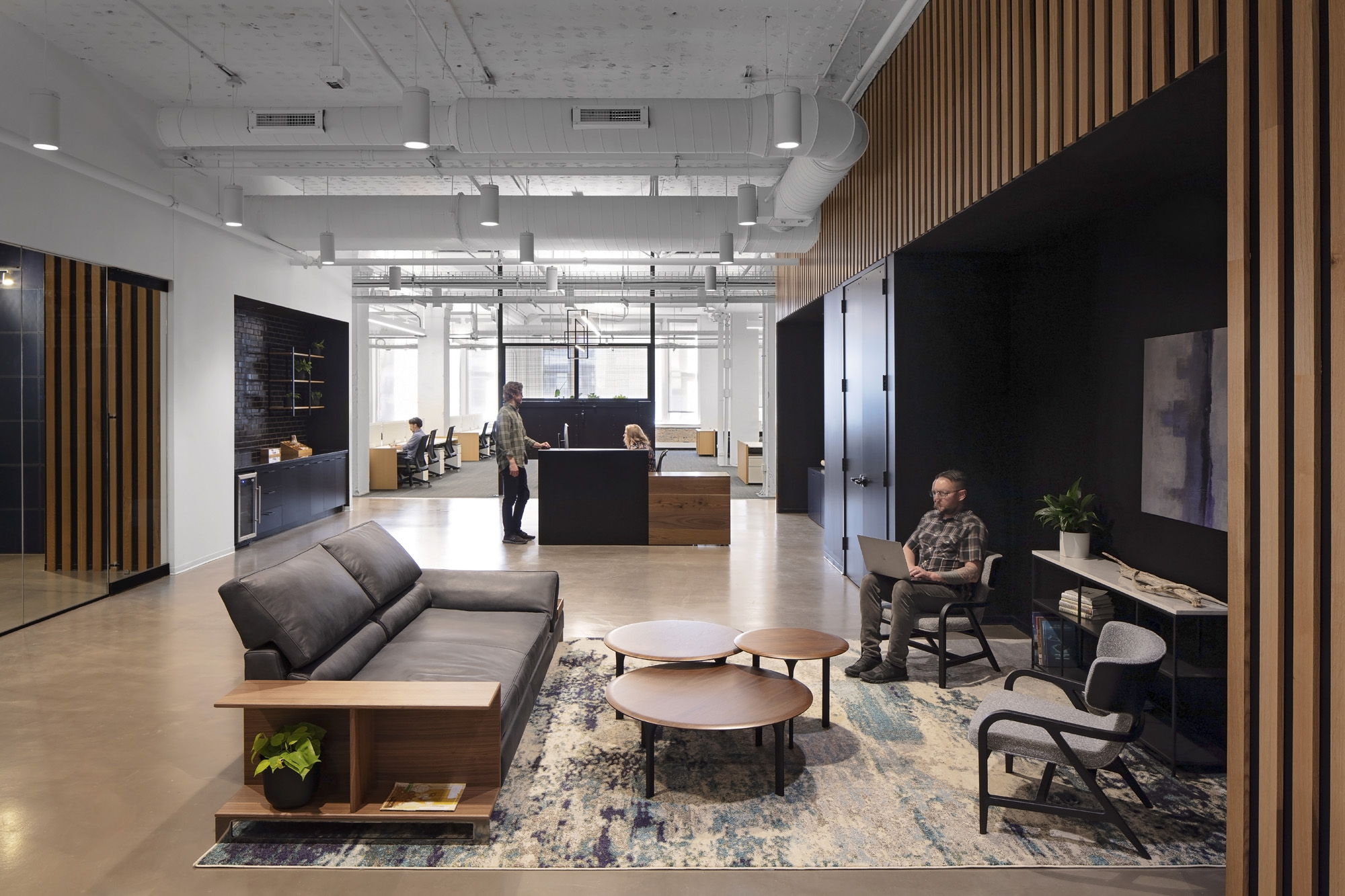
Old Mission Capital | NELSON Worldwide
2. Honest Transparency
The most important thing is to start the conversation. This lets employees know that you’re trying and willing to have open and honest discussions around their needs. In turn, it will most certainly lead to your teammates being more willing to come to you when they need assistance and to a feeling of being supported and heard. You cannot be expected to know every individual’s needs, but if you open the line of communication, you will be more likely to have those who really need your help and support, reach out so you have the opportunity to accommodate them.
3. From Fixed To Fluid
Be willing to test out new ideas and if they aren’t working, be ready and willing to pivot. The most resilient organizations are those that are agile and willing to flex and change direction when needed. Your space needs to be just as flexible as your organization in order to adequately support it rather than hindering you in those key moments. Not only giving your employees choice in where and when to work, but allowing those within the physical space to choose where and how they work.
Also, consider utilizing the “kit of parts” we’ve all come to know and love in a new and different way. Instead of providing cookie-cutter spaces that are all the same, think of spaces more like the individuals that occupy them – unique settings that are individually adaptable to support the needs of your teammates. Build spaces on a module and consider demountable solutions that will more easily allow you to make physical changes down the road without significant cost or schedule impact.
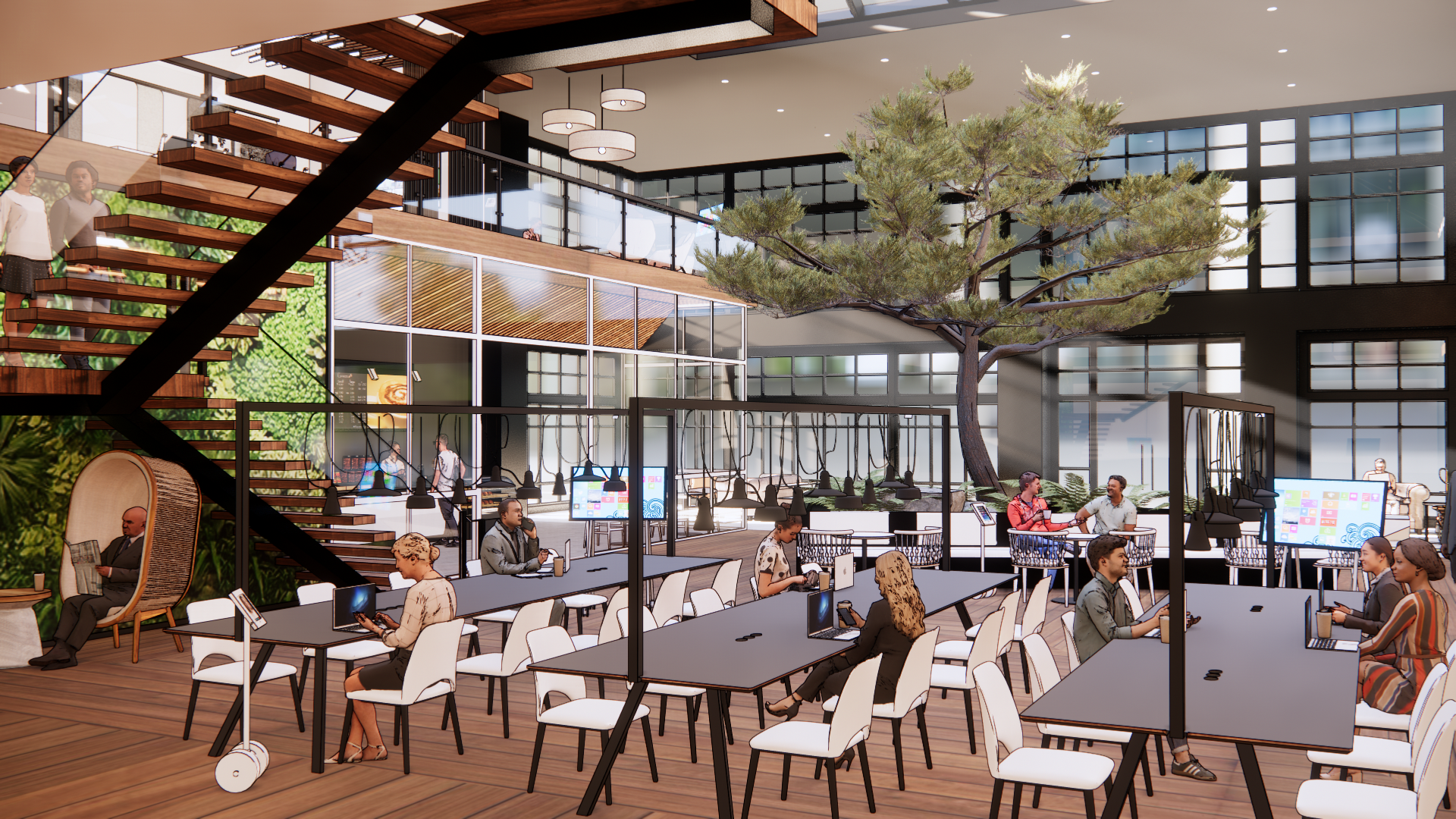
Social Clubs Concept by NELSON Worldwide
4. Empowered Employees
Start early with your change management efforts. Get employees excited for the change, ease them into the process by allowing them to see the space either in-person or virtually before the move. Train them on how to use their new space (furniture, moveable walls, etc.) Allow them to bring friends and family in to show it off and increase their pride in the space. And, most importantly, get upper management to use the space in the way it was designed to be used.
This shows employees not only how to use it, but that it is okay to use it. This may seem silly to you, but people need to feel like they have permission to use the space without judgment and this is especially true if you’re coming from a space where previously everyone went to their assigned space and didn’t leave that space until they left at the end of the day.
5. Equity Of Experience
We have to understand that some people were able to work more effectively from home, where they had complete control of their environment. Therefore, if you are requiring your teammates to come back to the office in any capacity, some of that control will be taken away. How can we ease the minds of those coming back and allow those who will now be working in a hybrid environment and those with varying personal experiences and backgrounds to have equitable experiences?
Give people access to the tools to do their job effectively and then let them choose when, how, and where to use those tools to support themselves throughout the day.
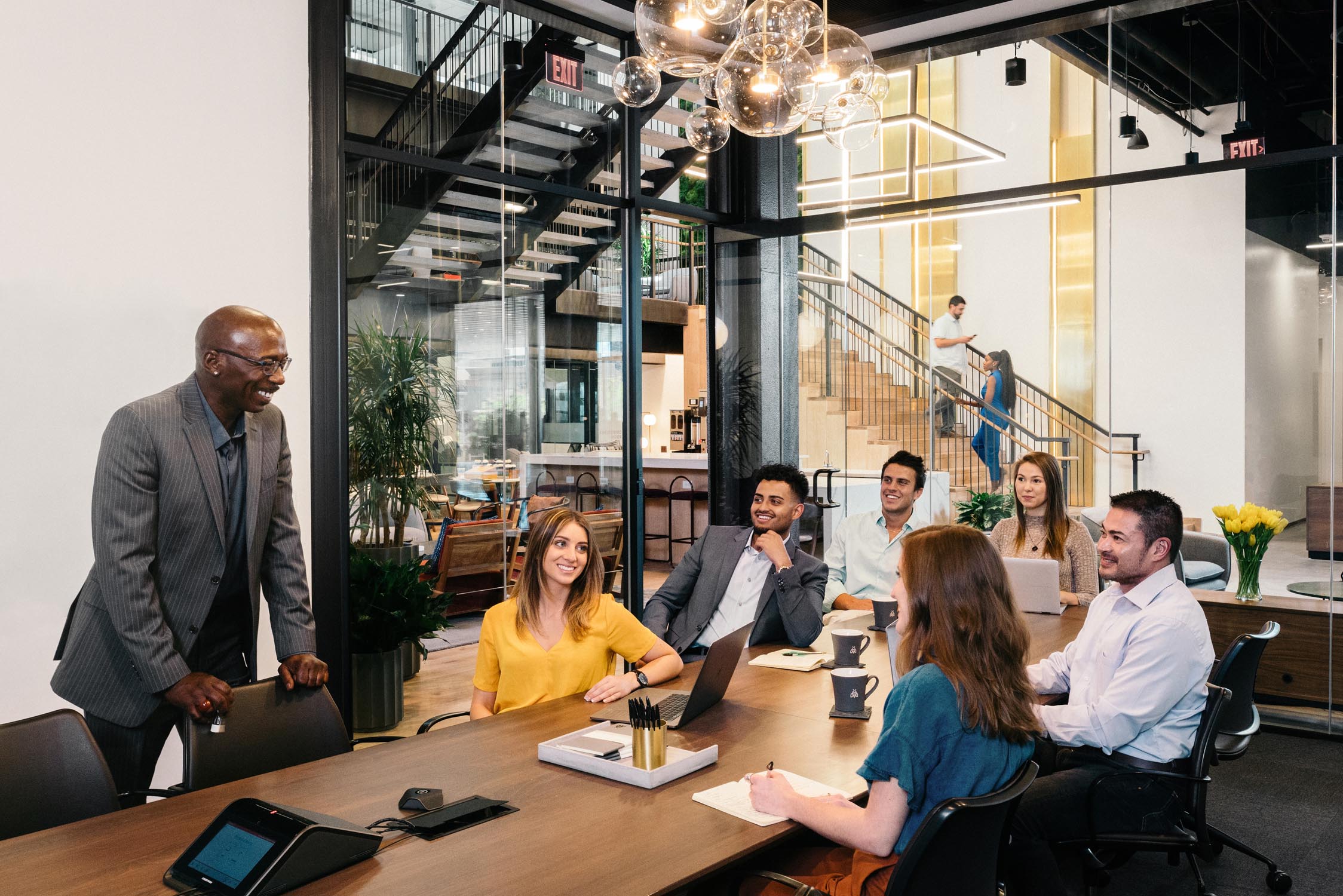
Industrious | NELSON Worldwide
As the workforce returns to the office, the most successful organizations will intuitively adapt and respond to each unique worker’s needs. Whether they are in the physical office or working remote, keeping comfort, support, and equity at the top of mind is key to creating spaces for all.
Evolving Workforce Expectations: How streamlined communication can lead to employee gratification
NELSON Worldwide’s Evolving Workforce Expectations study explores employees’ sentiments about returning to the office, and the impact COVID-19 has had on work environments and employee engagement. As part of our Evolving Workforce Expectations blog series, we’re taking a closer look at each of the key themes that stemmed from our research: communicate, activate, control, and support. Follow along to learn more about each theme and how your brand can pull off a successful re-entry strategy.
The golden rule when it comes to employee communications is typically to over communicate. This is especially true right now, when people are feeling anxious, stressed, generally uneasy, and looking to company leaders to provide answers. Communication is the key to easing frustrations, concerns, and fears associated with the unknown, and our research from the Evolving Workforce Expectations Study proves this.
Returning to the office in person will require transparency in efforts to provide safety, but also a renewed focus on communication of the purpose and mission behind companies. Here’s what you can do to streamline your communication:
Diversify your communication channels
Our survey findings say employees crave multiple touch points of communication, and they’re looking for confidence through conversation. However, that doesn’t mean every employee will absorb the same message in the same channel. Branch out and know that some may respond best to an email message, while others are seeking video calls, snail mail, and even physical signage reminders. No matter if the message is the same, expand your communication channels to drill down your key points. Examples include:
- Email messages, internal social network postings, and even text messages
- Welcome posters, elevator signage, and digital monitors
- Comment cards both digital and physical
- Team meetings and town halls in-person and via Zoom
45% of survey respondents said clear communication regarding what’s been done to ensure their safety and what new procedures have been put in place is extremely important to them.
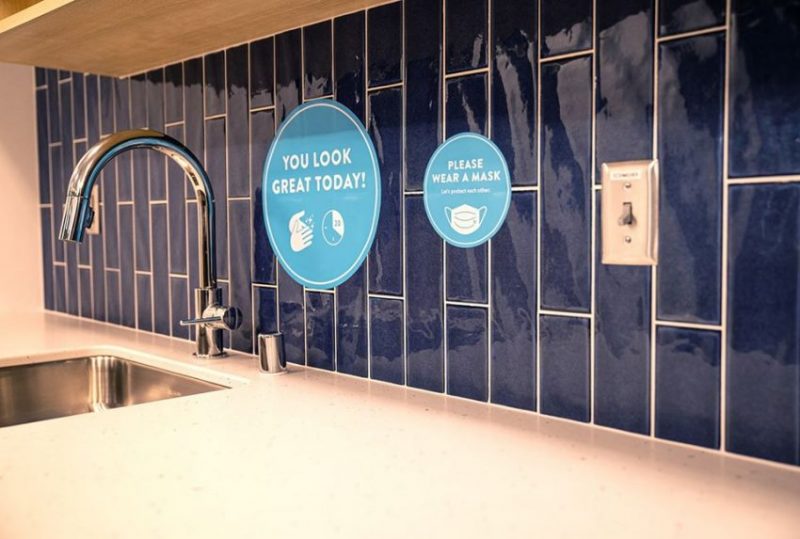
Make the workplace more accessible
With many companies offering employees the choice to return or not, it’s important to make the office more accessible for everyone, no matter what their situation is. Some may want to make frequent visits for heads down work away from distractions at home, and others may only want to come in for important face-to-face meetings. Ways to make the workplace more accessible include:
- Create a sign-up portal for those wanting to enter the office sporadically
- If your company isn’t using one already, consider installing a space management software system to reserve conference and meeting rooms, limit capacity, and more
- Provide training for employees to educate on reducing physical contact while maintaining a connective culture
- Have dedicated IT and operations support teams for both virtual and in-person employees
81% of survey respondents say openness to requests for continued flexible or remote work hours rated extremely to very important when it comes to helping them feel productive, safe, supported, and empowered.
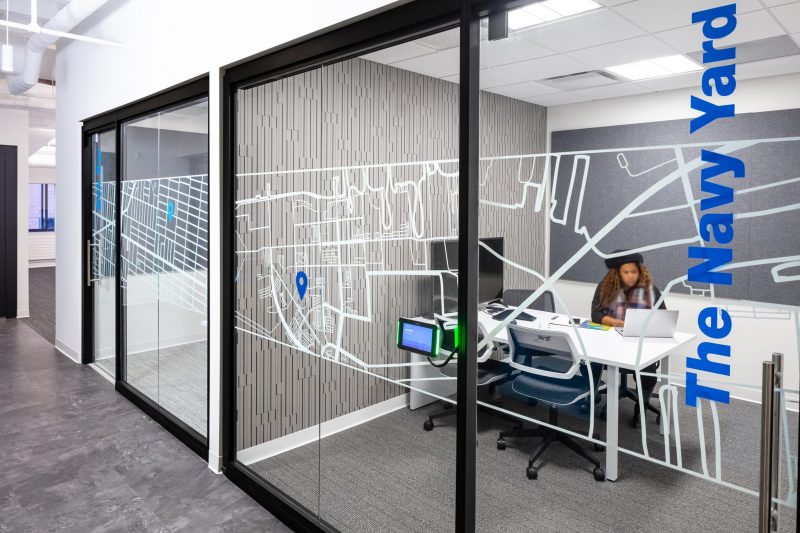
Keep employer brand top of mind
NELSON’s Evolving Workforce Expectations study found that nearly 40% of respondents were worried about being able to continue working for their current company. This tells us that people are connected to their current careers and are seeking reassurance that they can maintain that relationship. Part of that connection is the socialization that happens between teams while onsite. Brand-centric communication can help alleviate some of that concern and sadness. As long as an employee still feels connected to the brand, even if it’s a virtual connection, work satisfaction is elevated. Here is how this can be accomplished:
- Tie communications back to your mission, vision, values, and even services
- Highlight positive messaging that emphasizes a brand’s accountability (i.e. hold the company and employees accountable for washing hands, sanitizing, and wearing masks)
- Provide custom, branded Zoom backgrounds for all to use when communicating with each other and clients
- Brighten up the office by adding a brag wall featuring accomplishments, recognition, and more
54% of survey respondents say teamwork and sociability is important when it comes to a physical office environment.
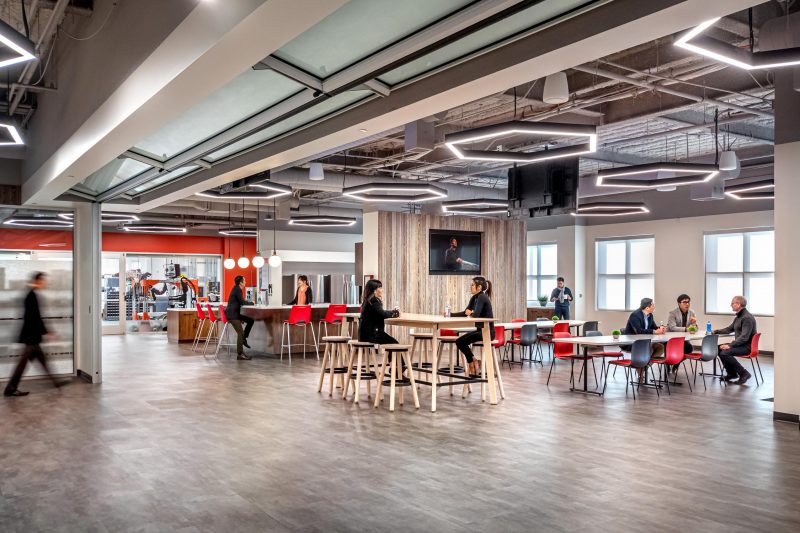
Plan for every step of the way
Employers must think of the re-entry strategy from all angles. Consider the communication before going back, during the process, and after the fact. Simply communicating once will not satisfy the need for reassurance. Overcommunicate through multiple channels at multiple points of time. Create a dialogue where you tell them what they need to know, tell them again, and then remind them of what you’ve already told them one more time. Consider the following tactics:
- Determine a plan for returning and communicate it often before going back
- Assemble a “welcome back kit,” consisting of sanitizers, masks, quick visual guides pertaining to office layout changes, lists of new protocols for quick reference, and more
- Host regular meetings upon the return to the office, giving the opportunity for an open dialog
Return to Work Survey
Evolving Workforce Expectations
Learn more about NELSON Worldwide’s proprietary research study on emerging employee expectations to better determine the impact COVID-19 has had on work environments and employee engagement. We uncover insights that will help drive your re-entry strategy and provide support and context for future decisions.
Color Factory
Back in 2017 one of my favorite blogs, Oh Happy Day, announced a new project called ‘Color Factory’. It was described as a ’12,000 square feet of color experiences’, a collaboration between their favorite artists, designers & chefs to celebrate color, design, and their hometown of San Francisco. All the bright colors and fun looked amazing, but it was also on the other side of the country. THEN, this summer, Color Factory brought their hugely successful exhibit to New York, so during BDNY week, we were able to get tickets and experience the fun firsthand!
To begin, we entered the ‘lobby’ greeted by a physical manifestation of their colorful, New York-centric website, a display of colors and poems inspired by the streets of New York, and most importantly, mochi ice cream. The space became a holding area where you can hand in your tickets and check your coats before you enter the exhibit. It was explained that we would enter through a series of rooms that let you experience color differently, sometimes there would be an activity, sometimes a food pairing, sometimes selfie stations and sometimes all three. One of the most clever things they did was hand out cards with a QR code that we could scan at different stations which would take a picture of us and send it directly to our email, so we could be hands free!
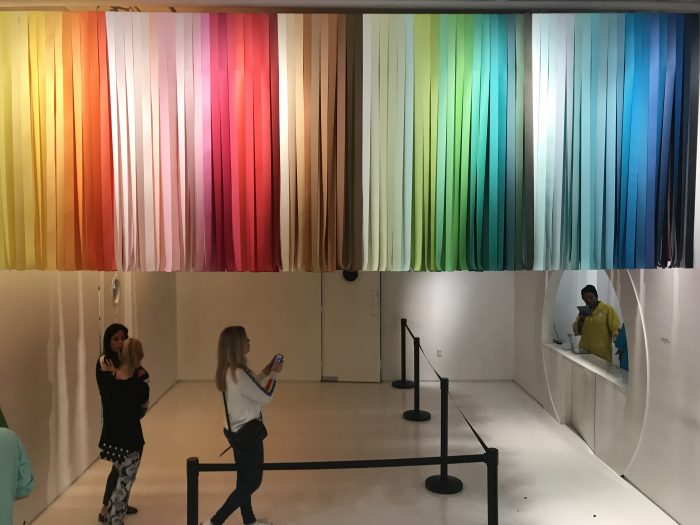
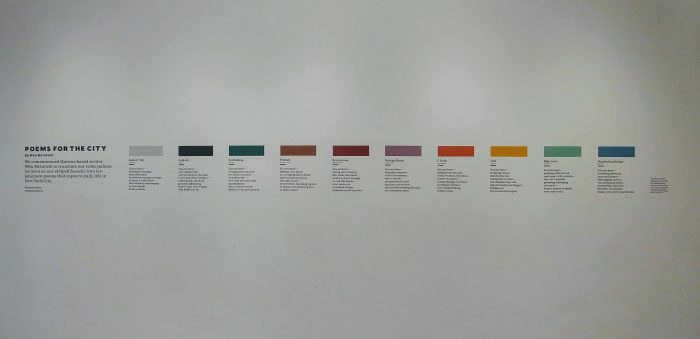
The first room was full of colorful pins, and each person got to pick which color spoke to them (I picked ‘Jet’ which looked to me like an inky blue/purple, but was really just black). As we traveled through the exhibit, we did some activities that made us feel exposed (like staring at your coworker intently, while sketching them without looking at the paper or picking up your pencil), some were a little less exciting than others (like playing plunking on a two note xylophone), some were sponsored by big brands (like the dance party sponsored by Maybelline) and almost all of them had a food pairing (the best one was the blue ice cream from the blue ball pit room).
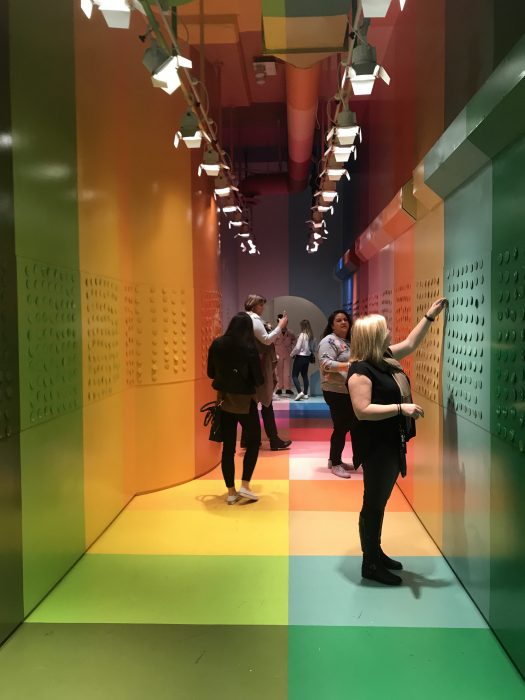

But, I think my favorite rooms focused on the origin of colors and the translation of an experience through color. There was a room about midway through that showed colors named A-Z; each color was mounted on a drawer slide – one side named the color and the other explained its origin. As a designer that digs through color every day; understanding the origin brought more meaning to the palettes we select. Another room translated a palette entitled ‘Thoughts on a Subway on 7/30/2018’, below were listed the ‘thoughts’ and their translating colors gradating from a sunny yellow to a deep midnight blue. The artist then made this observation and palette into a merry-go-round bringing the colors to life (and creating a platform for a cool Boomerang).
The price tag for a ticket is steep ($38/person), but you got a lot of bang for your buck with take-aways, activities & food pairings. If I had any critique, it would be that the rooms sometimes felt disconnected (most likely because of the wide variety of artists they included), sometimes it felt like the procession had meaning and connected to the room before, and sometimes the rooms seemed to stand alone. I almost expected the path to build up to a final New York – centric experience or reveal. The last room featured a GIANT blue ball pit, which was VERY cool, but didn’t seem to speak to the color story inspired by New York. That said, I really did love every minute of this exhibit, surrounded by color, inspiration and artistry, it was hard for me to find something I didn’t enjoy. We spoke with some of the guides along the way, and it sounds like they’re still discussing how long this exhibit will be in place (the one in San Francisco lasted about 8 month), but if you’re in New York and you love color (and who doesn’t?) – this is a must see.




